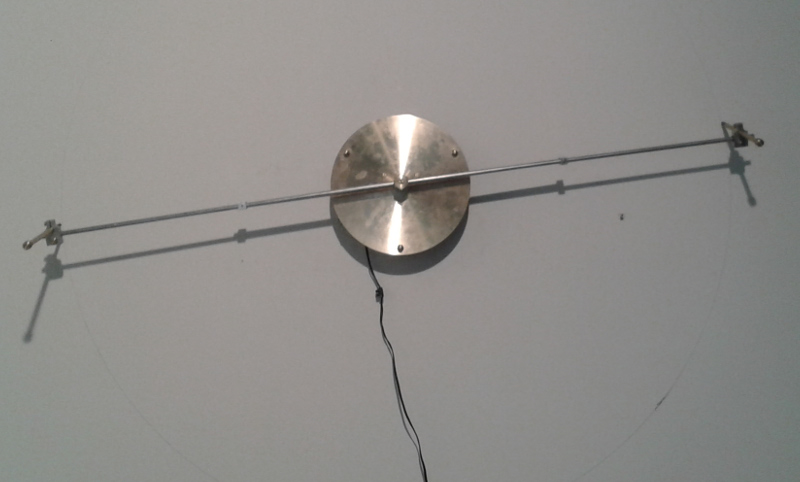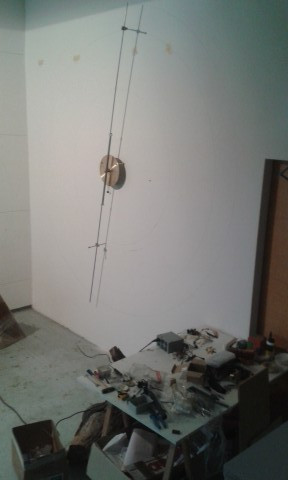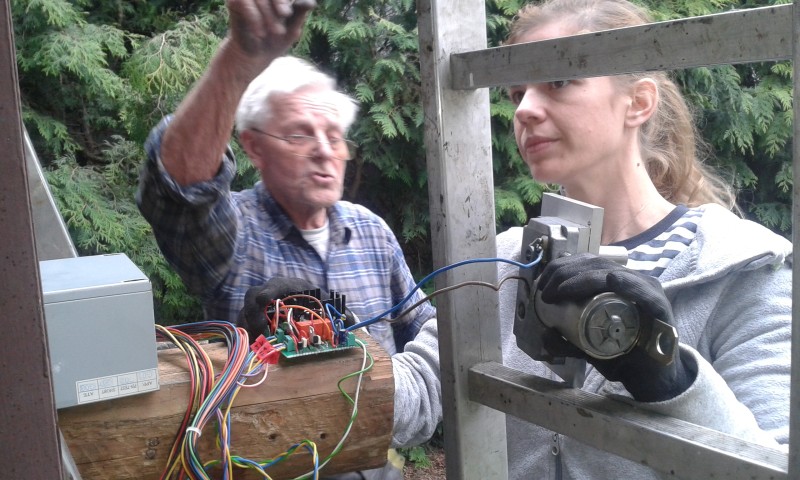Bowed, a circle drawing robot
Category: Inventions
Collaborators: Meta Grgurevič, Jaša

Here is yet another project that I made as part of a team assembled by Meta and that went to a show by Jaša. This time it was the Venice Biennale, where Jaša had his show Utter in the Slovenian pavilion. In addition to this circle drawing robot, I also made a custom sound to lights interface for controlling the lighting fixture of the pavilion. Hopefully it has its own page here soon.
Actually, this was about making an old piece again. Meta had already built a machine for drawing circles in the wall — I remember it from a posh but bohemian art collectors’ party in 2014. However, due to some mechanical problems, it was broken. So she wanted to recreate the machine, of course in a better way.
For the new piece, Meta decided to use a wiper motor from a car as the source of motive power. As the idea was to draw circles slowly, the wiper’s original rotational speed was way too high. She had some problems with mechanical reduction by gears, so she asked me to find an electronic solution. After a bit of reading, I figured out that it should be possible to add something called “armature emf control” to an existing motor, and that should allow for choosing any rotational speed for the motor. (I need to discover the good web pages about it again. Unfortunately, now I could not find them.)
In the end the system turned out to be quite simple: The counter electromagnetic force induced by rotation of the motor winding is measured, and a feedback loop based on a pi controller. This way the speed of the motor could be reduced to around 3 revolutions per minute. That is quite close to the original target of 2. Unfortunately there was some kind of lower bound, below which the device entered a loop of first stopping completely, then rushing to rotate too fast for a short while, before stopping again so that the cycle could repeat. Maybe this had something to do with the difference of static and sliding friction of the pencil that was drawing the circle. Maybe it could also be circumvented by more careful tuning of the controller, if even lower speeds were really needed.
While I was building and programming the controller, Meta was hard at work with France Petač at his metal workshop, completely repurposing the original wiper motor. The resulting solid metal construction had a retractable 3 meter long shaft capable of holding one pencil at each end.
Of course nothing ever comes easy.We had something like a catastrophe during the construction. The very first test of the complete piece was done using a very long shaft without counterbalance, which resulted in very uneven stress breaking the gears inside the wiper motor. From this we learned that it is the best to set up the device with two arms of about equal length. The next wiper motor was durable enough to endure this kind of forces.
Technical documentation is available in a Github repository, where program code and schematics are hosted. The plans and also the finished piece include means to detect the position of the shaft using permanent magnets and Hall effect switches, and reversing the direction of rotation based on that. The system worked during the tests, but has not seen any use because it has not been needed.


